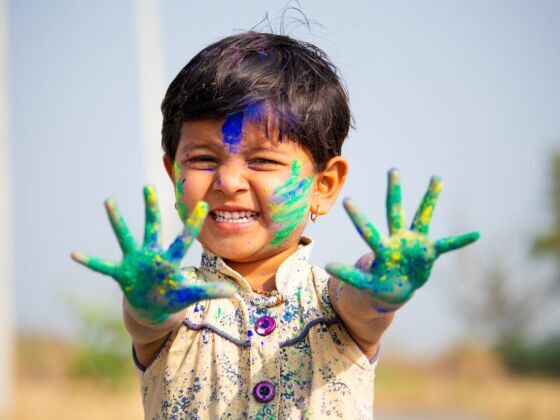1. Namaste
The most common greeting in India is to bring your hands to your heart (similar to prayer position), slightly bow, and lower your eyes while proclaiming “Namaste!” The greeting literally translates as, “The divine in me bows to the divine in you.” “Nama” means “bow” and “te” means “to you” in Sanskrit. This lovely message shows respect and gratitude for the person you are greeting. We can use this concept to remember to recognize and honor that we are all the same.
